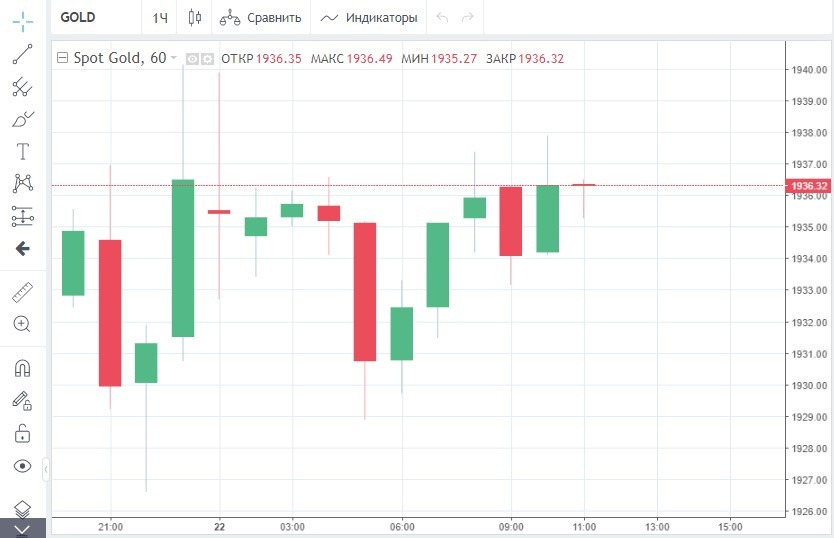
The gold market continues to be dominated by two pricing factors: macroeconomic and geopolitical. The price momentum will depend on which one of them prevails.
Yesterday, the Fed rhetoric and the Russo-Ukrainian conflict remained in the focus of bullion investors' attention.
The hawkish comments from the US central bank are having a downward effect on quotations. In contrast, the escalating situation in Eastern Europe is spurring demand for the safe-haven asset.
Since both factors are currently characterised by uncertainty and neither of them has a clear preponderance, this is reflected in the current development of gold.
The bullion closed trading yesterday with a slight increase of only 0.1%, or 20 cents. The final price was $1,929.50.

Gold managed to make a small gain at the expense of geopolitics. Russo-Ukrainian peace talks seem to have stalled again, while the situation in a number of Ukrainian cities remains extremely tense.
Against this background, fears of further tightening of sanctions against Moscow are intensifying. It now faces a European-wide embargo on Russian oil exports, which is boosting the price of oil.
The value of North Sea and Texas Intermediate crude rose by more than 7% on Monday, raising inflation risks. The US stock market was therefore in an anti-risk sentiment yesterday. This is also favourable for gold, which usually rises in value when share prices fall.
Nevertheless, the precious metal lacked the momentum to gain more solid gains at the beginning of the week. The main obstacle for bullion was yesterday's speech from the head of the US Federal Reserve, which turned out to be more hawkish than last week.
Jerome Powell stressed that the Fed will take all necessary measures to return to price stability. He added that if the Fed concludes that it is appropriate to act more aggressively and raise the rate by more than 25 bp at one stage, it will do so.
The Fed chairman attributed his hawkish stance on monetary policy to rising inflationary pressures.
He admitted that the central bank had underestimated the severity of the continuing global supply shortages and high demand for goods as a result of the COVID-19 pandemic.
Powell also added that the outlook for price growth had worsened considerably and it was not clear when inflationary pressures would ease.
He concluded that he did not expect a recession as a consequence of monetary policy tightening and described current economic conditions as strong enough to accelerate.
The dollar index and 10-year Treasury bond yields jumped sharply after the announcement. The greenback climbed above 98.00, expecting that the Fed could raise rates by 50bp at once in the near future. Meanwhile, yields soared on a wave of optimism above 2.3%, the highest since 2019.
Tomorrow the attention of investors will again be focused on the speech by the head of the US Federal Reserve. Markets are waiting to see whether J. Powell will confirm the Fed's hawkish stance. If he does not go back on his word, it could hit gold prices hard.
Traders will also be keeping an eye on US leader Joe Biden's visit to Europe in the coming days. The US president will discuss the conflict in Ukraine with NATO, G7 and EU leaders. If the meetings result in new sanctions against Russia, it will, on the contrary, trigger another rally in the precious metal.





















